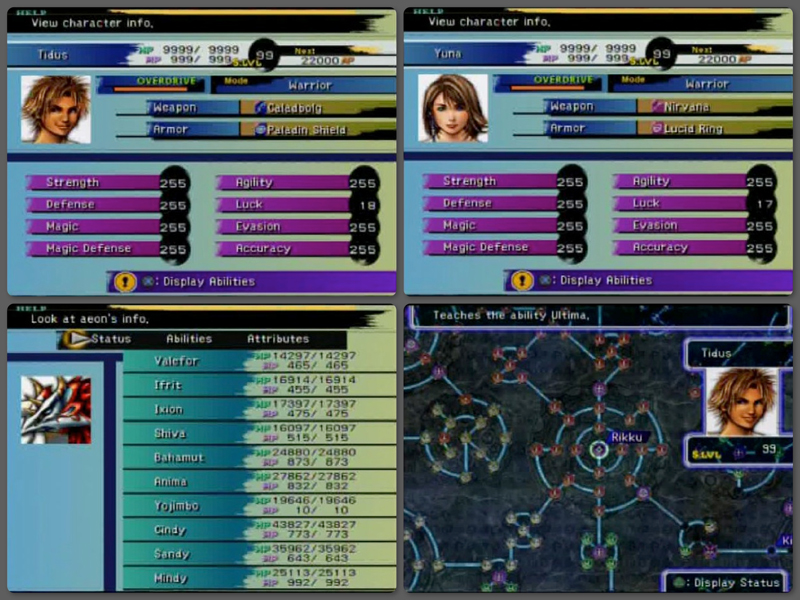
The game's story follows the character Yuna from Final Fantasy X as she seeks to resolve political conflicts in the fictional world of Spira before they lead to war and to search for her lost love Tidus from Final Fantasy X.
•: February 19, 2004 Mode(s) Final Fantasy X-2 ( ファイナルファンタジーX-2, Fainaru Fantajī Ten Tsū) is a developed and published by for the, as the direct sequel to. The game's story follows the character from Final Fantasy X as she seeks to resolve political conflicts in the of before they lead to war and to search for her lost love Tidus from Final Fantasy X. Final Fantasy X-2 set several precedents in the series aside from being the first direct sequel in video game form and the second sequel in the franchise, after the. It was the first game in the series to feature only three, an all-female main cast, and early access to most of the game's locations.
Additionally, it featured a variation of the system—one of the series' classic gameplay concepts—and is one of the few games in the series to feature multiple endings. Finally, it was the first game in the series that did not have musical contributions in it from longtime composer. The game was positively received by critics and was commercially successful. It sold over 5.4 million copies worldwide on PlayStation 2. Final Fantasy X-2 was voted as the 32nd best game of all time by the readers of. The English version of the game won an award for 'Outstanding Achievement in Character Performance' at the in 2004. The game has attained a rating of 86% on and an 85% rating on.
It was the final Final Fantasy game to be developed by Square before merging with Enix in April 2003. The game was re-released as a high-definition remaster for the and in 2013, together with Final Fantasy X, under the title. It was also re-released for the in May 2015, in May 2016, and will be released on the and in 2019. Announced in 2013 that the Final Fantasy X series has sold over 14 million copies worldwide. Contents • • • • • • • • • • • • • Gameplay [ ] Though a direct sequel to Final Fantasy X, Final Fantasy X-2 does not duplicate its predecessor's gameplay; instead, it innovates on traditional elements.
Warhammer 3D printed army This Reddit has 3D printed his own Warhammer 40k army. Free 3d files download. With the high prices that Warhammer figurines are sold, there is no surprise that true fans of the tabletop game are looking for cheaper options to have fantasy army in physical form at an affordable price.
Like pre- Final Fantasy X installments, characters 'level up' after a certain number of battles, by gaining pre-determined bonuses. The system in Final Fantasy X has been replaced by a faster-paced variation of the Final Fantasy series' traditional active time battle (ATB) system, which was originally designed by and first featured in. Whenever a random enemy is encountered, the ATB system is used. Under this enhanced version of the ATB, playable characters may interrupt an enemy while they are preparing to take action, instead of waiting for an enemy's turn to finish before attacking.
Furthermore, it is possible for both characters and enemies to chain attacks together for greater damage. Navigation and quests [ ] Another departure from the gameplay of Final Fantasy X is in its world navigation system: players can visit almost every location in Spira from early in the game, transported via the Celsius. This is a deviation from the overall Final Fantasy series, where the most efficient means of transportation is typically not obtained until late in the game. An example of navigation on the field map These two changes allow players to choose a less linear storyline. Unlike Final Fantasy X, in which a player's course through the game's world was largely straightforward, Final Fantasy X-2 is almost entirely free form.
The game consists of five chapters, with each location featuring one scenario per chapter. Put together, the five scenarios in one locale form a subplot of the game, called an 'Episode'. Only a few scenarios per chapter are integral to the game's central plot, and are marked on the world navigation system as 'Hotspots' ('Active Links' in the Japanese version). By accessing only Hotspots, a player can quickly proceed through the game's story without participating in. The game keeps track of the player's completed percentage of the storyline, increased by viewing the scenarios comprising each Episode. If 100% of the game is completed, an additional ending will be unlocked.
The game features a fork in its plot, allowing the player to make a choice that changes what scenes they see and the number of percentage points they acquire afterward. It is impossible to see all of the game's content on a single playthrough, due to this fork in the storyline, although it is possible to achieve 100% storyline completion in a single playthrough. However, a 100% storyline completion can only be achieved through one of the two possible storylines. When the game is completed for the first time, it unlocks a option that allows the player to restart the game with all of the items, Garment Grids, dresspheres and storyline completion percentage achieved previously. Reliability software free. However, all character levels are set back to one. The field-map navigation system is largely unchanged from Final Fantasy X; it is still dominantly with mostly continuous locations.